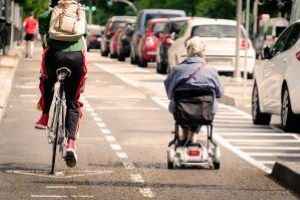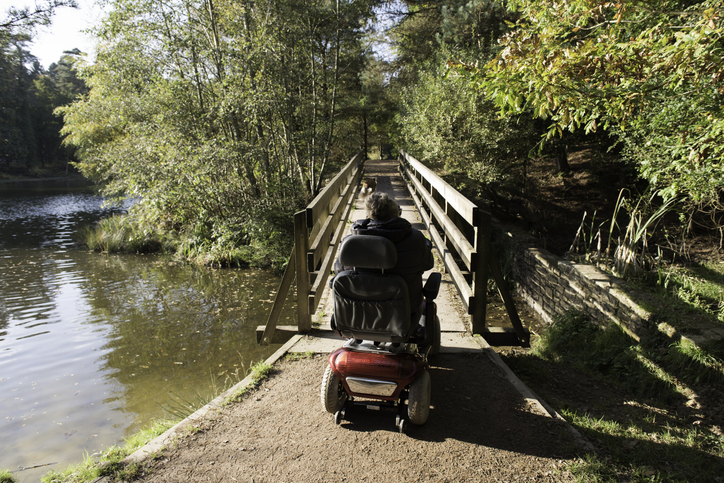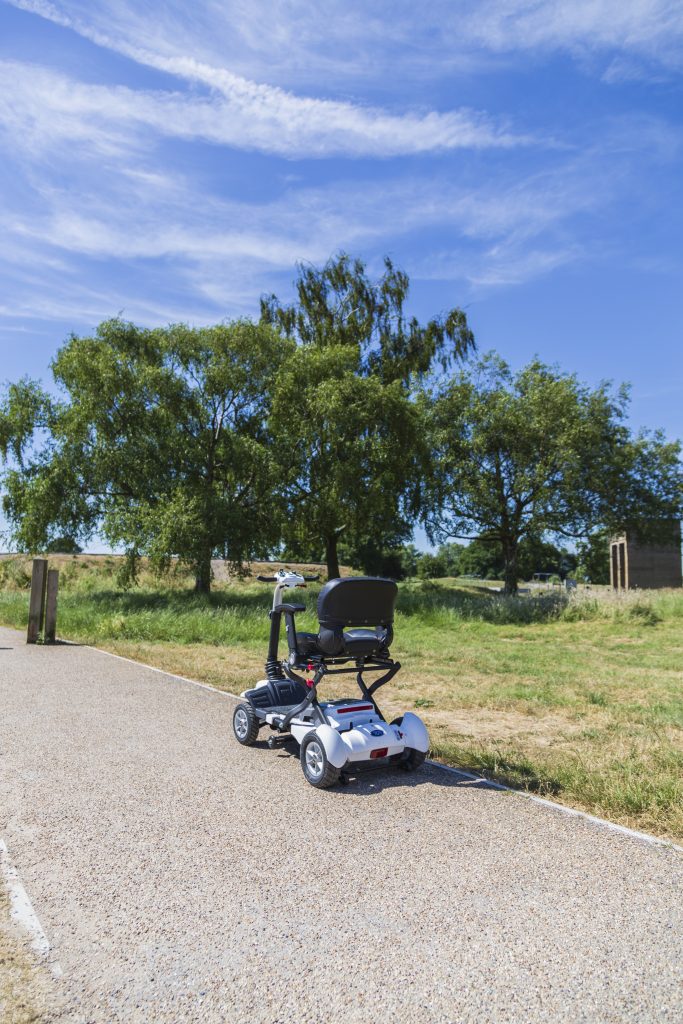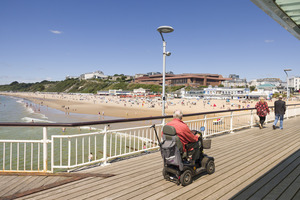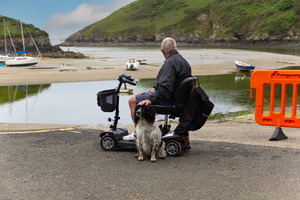If you have a mobility scooter that can be driven on the roads, you’ll need to know what laws and regulations apply to you in order to keep you and those around you safe.
In general, the rules for mobility scooters on the road are the same for motorists. However, there are some cautionary rules which apply specifically to mobility scooter (or invalid carriage) users. So you should begin by familiarizing yourself with the most important rules.
What Mobility Scooters Can Be Driven On The Road?
Road legal mobility scooters are known as ‘Class 3 invalid carriages’. They can have a maximum speed of 8mph on the road, and 4mph off the road.
Mobility scooters that are intended to be driven on the road must also have:
- A braking system
- Front and rear lights
- An audible horn
- Rearview mirror
- A flashing amber light if used on a dual carriageway
- Indicators
Rules For Mobility Scooters On The Road
Below are a few key rules to be aware of when driving your mobility scooter on the road.
Safety and Visibility
Remember that your vehicle is travelling far slower than most of the traffic around you. In other words, you might not be visible to other motorists. Be sure to wear something highly visible (and reflective) when travelling in your mobility scooter. You should always wear a visibility jacket and ensure your scooter has the appropriate lighting if travelling when there is low visibility.
Pavement
Class III vehicles (three-wheeled vehicles) always have to travel in the direction of the traffic when on the road. Class II (powered wheelchair) drivers should always use the pavement when available and if there’s no pavement they should use extreme caution on the road.
When approaching road junctions make sure that there are no vehicles on your path, or about to overtake you from the left or the right.
Caution Is Key
If it is difficult or dangerous to turn right, you can stop on the left-hand side of the road and wait for a safe gap in the traffic. In this case, it’s permissible for you to act like a pedestrian, so you can travel along the pavement and cross between the pavements if it’s safe to do so. Class 3 users must switch their vehicles to a slower speed when on pavements. If the junction feels too unsafe or dangerous you should reconsider the move and find an alternative route for safety’s sake.
Parking Restrictions
Parking restrictions which apply to motorists also apply to mobility scooters or other Invalid Carriages. If you have a Blue Badge, the parking concessions apply to your vehicle under the scheme but remember that your vehicle shouldn’t ever obstruct traffic or pedestrians.
Speed Limits
You are not permitted to use the motorways or unrestricted dual carriageways where the speed limit exceeds 50mph. If you have no choice but to use your vehicle on dual carriageways, you must have a flashing amber beacon.
Mobility scooter users are advised to go for regular eye exams, as their vision needs to be good enough to read a car’s registration number from a distance of 12.3 metres (40 ft). If there’s an accident as a result of your poor eyesight you may well have to pay compensation.
Rules For Mobility Scooters On Trains
The biggest problem that concerns mobility scooters and public trains lies in the design of the scooter. Mobility scooters are designed to allow people with special mobility needs to get around indoors and outdoors without having to walk or use public or private transportation. They aren’t designed to be carried by public transport vehicles because they’re rather bulky and are a challenge to manoeuvre.
Another problem is that mobility scooters can sometimes tip backwards on ramps, which is a major safety hazard not only for the scooter user but also to other passengers who find themselves queued behind the tipping scooter. Furthermore, scooters’ maximum weight is heavier than ramps’ safe working load.
Current access standards don’t require trains to make provisions or adaptations for scooters. The decision lies with the individual train operating companies. If you rely on a mobility scooter and need to travel by rail, it’s best to contact the operators directly to find out whether they’ve been fitted to be mobility scooter-friendly. If you require assistance you are advised to give train operators at least 24 hours notice.

